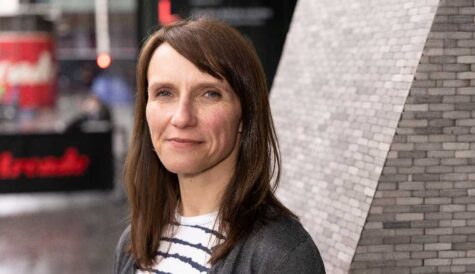Prepare to launch
 With more programming in production than ever, the need to market and sell a show before its launch is stronger than ever. Jesse Whittock talks to the executives sowing the seeds for success before a series hits the air
With more programming in production than ever, the need to market and sell a show before its launch is stronger than ever. Jesse Whittock talks to the executives sowing the seeds for success before a series hits the air
With video-on-demand platforms, pay TV services and free-to-air broadcasters all active in commissioning programmes, it is easy to miss the new shows hitting the market. As one key network drama executive told TBI earlier this year, “It’s my job to know what’s out there, but I cannot know it all in the current market.”
 Therefore, the job of launching a show – be it in the marketing, scheduling or international roll-out – has become ever more important. Former BBC Worldwide exec Amanda Hill (right) joined A+E Networks in March 2015 as international chief creative officer, tasked with overseeing programming, marketing and communications teams for the global portfolio of channels such as History and Lifetime. Her appointment was a direct response to need for shows to cut through before their debut.
Therefore, the job of launching a show – be it in the marketing, scheduling or international roll-out – has become ever more important. Former BBC Worldwide exec Amanda Hill (right) joined A+E Networks in March 2015 as international chief creative officer, tasked with overseeing programming, marketing and communications teams for the global portfolio of channels such as History and Lifetime. Her appointment was a direct response to need for shows to cut through before their debut.
“The first thing I wanted to implement when I joined was to make sure we operate on a wide scale,” she says. “We wanted to find a way to find a position globally. So much marketing has to be done before filming, and it’s rarely good enough to create an edit that simply says ‘watch this at 9pm’ these days. One of the best ways is to look for the ideas inside the show.”
 That’s something that Limor Gott Ronen (right), head of marketing and communications at Israel-based distributor Keshet International, understands. “The idea of having a good story that people can relate to at the very start is the basis of everything,” she says. “I’d like to say marketing is at the core, but it’s the story.”
That’s something that Limor Gott Ronen (right), head of marketing and communications at Israel-based distributor Keshet International, understands. “The idea of having a good story that people can relate to at the very start is the basis of everything,” she says. “I’d like to say marketing is at the core, but it’s the story.”
“Identifying a production’s unique selling points for the global market at inception stage – and then translating these into bespoke marketing communications and collateral for our international licensees with a view to tailored domestic releases – is key,” says Content Television’s senior VP, marketing and communications, Jennifer Brinkworth.
“An in-depth knowledge of individual territory trends, and an understanding of the regional nuances in the style and tone of marketing ensures that our brands are both well positioned and well promoted in their respective territories,” she adds.
With Keshet’s drama The A Word (pictured top), which went out in the UK on BBC One and in the US on SundanceTV, and is about an autistic boy and his family, the key was creating materials that summed up the core theme of the series: communication.
Working with the local marketing team at coproducer Tiger Aspect Productions, the issue was creating “a marketing platform for people to talk about autism”, says Gott Ronen. “Autism is a big part of the show, but at the end of the day it’s a show about communications, and everyone can relate to that,” she adds.
This strategy works for both scripted series such as The A Word and unscripted efforts such as A+E’s docuseries format 60 Days In (below), in which seven regular civilians voluteer to spend a month-and-a-half in an Indiana prison.
 “We used 60 Days In as a way of widening the conversation about what it’s like to be in jail,” says Hill. “We want to talk about the story that sits inside the programme. Marketers are becoming storytellers, and the process is becoming so much more editorialised.”
“We used 60 Days In as a way of widening the conversation about what it’s like to be in jail,” says Hill. “We want to talk about the story that sits inside the programme. Marketers are becoming storytellers, and the process is becoming so much more editorialised.”
A joined-up, international approach is the key, she adds. “We are now connecting assets, which are the most expensive elements along with the distribution, and it’s about stories that resonate in every single market. It’s not enough to have a domestic strategy alone. I could tell US stories that are absolutely meaningless elsewhere.”
With History’s big-ticket Roots reboot, which launched at MIPTV, the key was to create materials around “pride, courage to fight against oppression, and human dignity” rather than focusing on the American slavery narrative for which the miniseries and its 1970s predecessor are best known.
 Event programming equally benefits from the tailored approach, says Content’s Brinkworth (left). “One example from Content’s line-up is The Primetime Emmy Awards, which we distribute internationally,” she says. “The awards are licensed in over 160 territories, with each licensee platform maximising exposure for this high profile event programme through premium, glossy promotional material.
Event programming equally benefits from the tailored approach, says Content’s Brinkworth (left). “One example from Content’s line-up is The Primetime Emmy Awards, which we distribute internationally,” she says. “The awards are licensed in over 160 territories, with each licensee platform maximising exposure for this high profile event programme through premium, glossy promotional material.
“There is a varied approach across all territories, some drawing on the red carpet sense of glamour and celebrity following, whilst others focus on cross promoting Emmy-nominated shows that already feature or are coming up in their broadcast schedules.”
Content will work with respective licensees to tailor support, “whether this be by providing red carpet spots, access to talent or involvement in round table interviews in the run up to the event”, says Brinkworth.
Barcroft Media takes a similar approach when launching its factual entertainment series. “We think that content as a form of PR is the best way to create a buzz around shows,” says company CEO and founder Sam Barcroft. “The key is to turn episode one into a cultural event. We try to keep that going throughout a few more episodes, and then have to rely on the quality of the show to keep the audience.”
Barcroft is in a unique situation, in that it has built itself as a television production company, a digital entertainment provider with significant social media and online channel presence, and a news distributor.
 In effect, this means Barcroft can use its own in-house journalists to create feature content that can then be seeded straight to digital and physical news outlets. This content will be directly related to the television programme, promoting the linear launch, with snippets or excerpts from the programme then seeded on Barcroft channels, social media platforms and those digital outlets owned by the network. “We work really hard with broadcasters’ PR companies to make sure the shows go big in newspapers and digital media,” says Barcroft (right).
In effect, this means Barcroft can use its own in-house journalists to create feature content that can then be seeded straight to digital and physical news outlets. This content will be directly related to the television programme, promoting the linear launch, with snippets or excerpts from the programme then seeded on Barcroft channels, social media platforms and those digital outlets owned by the network. “We work really hard with broadcasters’ PR companies to make sure the shows go big in newspapers and digital media,” says Barcroft (right).
“We have successfully used digital media,” he adds. “We work with the broadcasters to create content that leverages social media – we did that with [Discovery Life series] Body Bizarre. We’ve quite successfully done a lot of work in clipping content from those stories.
“Our shows prove that by creating shows with marketing at the core has been a really important part of getting through in an oversaturated market like the US.”
Barcroft says this strategy can mean a huge “value-add” to the broadcasters and the programme brands themselves, which are ultimately what consumers search for. “It’s all about growing the show brands,” he adds. “I never really cared what network Breaking Bad was on – I just cared about the show.”
Some distributors take a different approach. Melanie Leach, CEO of ITV-owned producer and sales house Twofour, notes that the company’s latest format, This Time Next Year, has sold to 17 territories from paper – nine series are in production and eight are options.
“Once we had ITV [as commissioning broadcaster] on board we were in a strong position to push other broadcasters over the line and into production,” she says. “You can’t pilot it because it’s a year in the making, but we were able to cut a teaser that did help to trigger the sales process.”
Leach says the processes in the early stages of a show’s lifecycle are largely the same as they’ve always been. “I’m not seeing any difference in the requirements or demands to get over the line,” she says, adding: “Good ideas sell. The pitch for This Time Next Year was just me in the room selling to buyers.”
For Twofour, the approach is largely about relying on the strength of the show. However, Leach says it is important to introduce talent to buyers at markets, in order to cement existing deals and encourage new ones. “Where there’s talent-driven programming we will take talent to market,” says Leach. “Alex Polizzi will come to Cannes, meet the buyers, and show them exactly what they’re buying. The territories that are buying need to feel a connection with the shows they’re acquiring.”
Content’s Brinkworth agrees. “Talent is a key draw for our buyers, and we aim to connect the broadcasters’ PR and marketing teams with the creative teams – those in front as well as behind the cameras – to ensure effective and engaging domestic marketing campaigns for our shows,” she says.
“Telephone interviews, press junkets and talent participation in international TV focused events such as MIPCOM can be hugely useful for broadcasters to build a press campaign around a show’s launch.”



